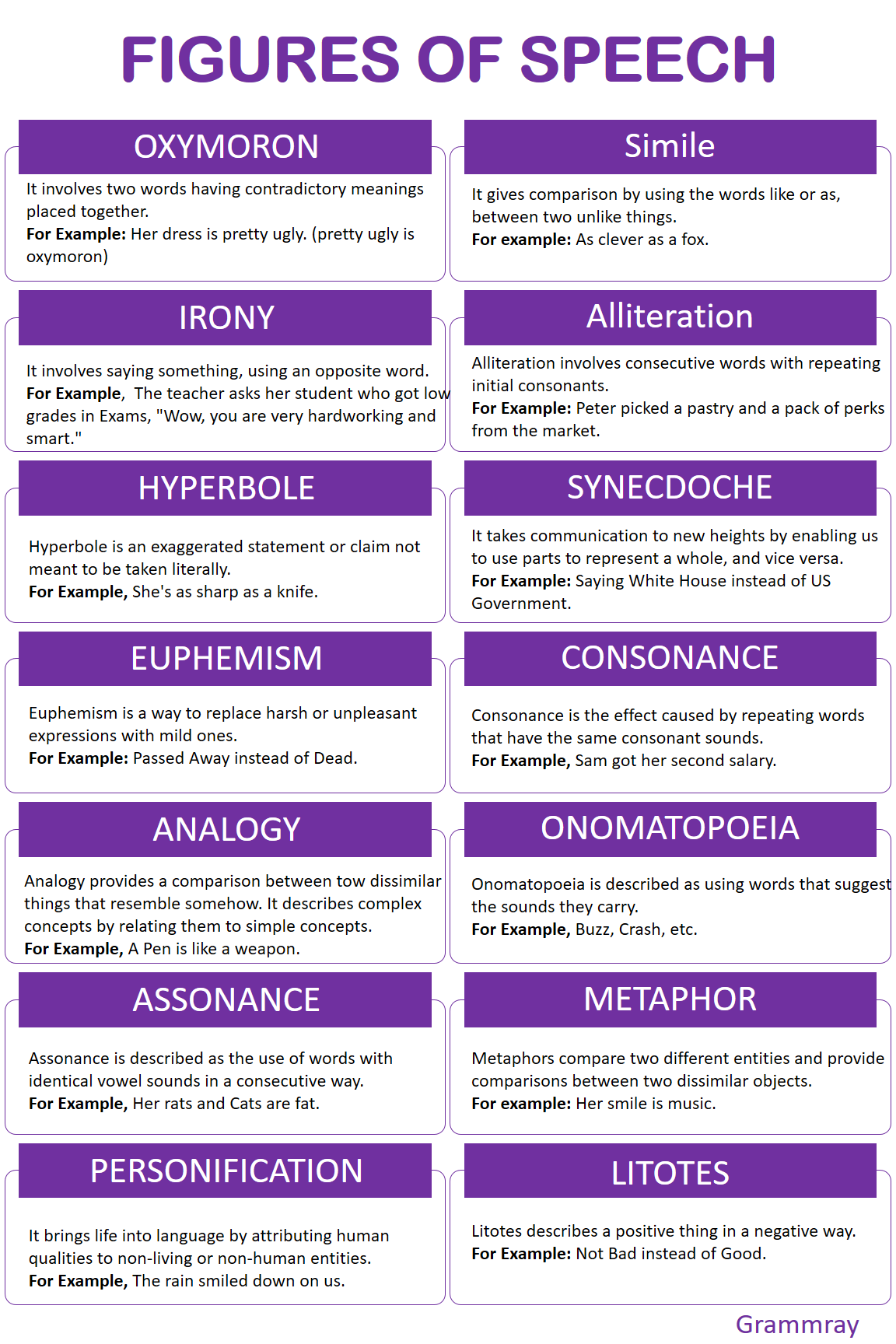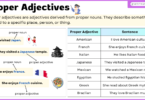Exploring Figures of Speech:
Have you ever wondered how words can bring out vivid pictures? Figures of speech are the skilled crafters in language and Grammar. It provides creativity, energy, and narrative skills for communication. Let’s delve into a journey of exploring figure of speech examples. A realm where language becomes vivid and inspires creativity. Let’s explore figure of Speech Examples and Definitions.
Figures of Speech is a Golden Tool that writers use to take their writing to new heights. Did anyone ask about its importance in language? They serve as a colorful painter and bring vitality into language. It brings depth and richness to the language.
Figures of Speech Definition:
It is a linguistic technique that enriches communication and language. It adds depth, creativity, and imagery to communication. Here are Figures of Speech.
- Oxymoron
- Simile
- Irony
- Alliteration
- Hyperbole
- Synecdoche
- Euphemism
- Consonance
- Analogy
- Onomatopoeia
- Assonance
- Metaphor
- Personification
- Litotes
Figures of Speech with Definition and Examples:
Oxymoron:
Oxymoron, A Wise Foolish, as the name indicates. It involves two words having contradictory meanings placed together.
For Example, Her dress is pretty ugly. (pretty ugly is an oxymoron)
Simile:
Simile gives comparison by using the words like or as, between two unlike things.
For example: As clever as a fox.
Irony:
Irony is a Figure of Speech that involves saying something, using an opposite word.
For Example, The teacher asks her student who got low grades in Exams, “Wow, you are very hardworking and smart.”
Alliteration:
Alliteration involves consecutive words with repeating initial consonants.
For Example: Peter picked a pastry and a pack of perks from the market.
Hyperbole:
Hyperbole is an exaggerated statement or claim not meant to be taken literally.
For Example, She’s as sharp as a knife.
Synecdoche:
Synecdoche takes content and communication to new heights. This enables us to use parts to represent a whole, and whole to represent a part.
For Example: Saying White House instead of US Government.
Euphemism:
Euphemism is a way to replace harsh or unpleasant expressions with mild ones.
For Example: Passed Away instead of Dead.
Consonance:
Consonance is the effect caused by repeating words having the same consonant sounds.
For Example, Sam got her second salary.
Analogy:
Analogy provides a comparison between two dissimilar things that resemble. It describes complex concepts by relating them to simple concepts.
For Example, A Pen is like a weapon.
Onomatopoeia:
Onomatopoeia is described as using words that suggest the sounds they carry.
For Example, Buzz, Crash, etc.
Assonance:
Assonance is described as the use of words with identical vowel sounds in a consecutive way.
For Example, Her rats and Cats are fat.
Metaphor:
Metaphors compare two different entities and provide comparisons between two dissimilar objects.
For example: Her smile is music.
Personification:
Personification brings life and breath into language. It attributes human qualities and characteristics to non-living things or non-human entities.
For Example, The rain smiled down on us.
Litotes:
Litotes describes a positive thing in a negative way.
For Example: Not Bad instead of Good.
After exploring types, Let’s practice our Learning on Figures of Speech. Practice these Figures of Speech to better understand what we have explored and learned.
Role of Figures of Speech in Language:
After exploring figure of speech examples and definitions, let’s explore its importance. It plays a vital role in language, literature, and communication.
- Enhanced Expression
- Creativity and Imagination
- Effective Communication
- Emotional Appeal
- Memorability
- Literary Excellence
- Cultural Significance
At the end of our trip to the fascinating valley of Figures of Speech. We can conclude that each Figure of Speech plays a vital role in communication. They paint clear pictures and bring life to language.

Let’s explore Figures of Speech with Definitions and Examples.







